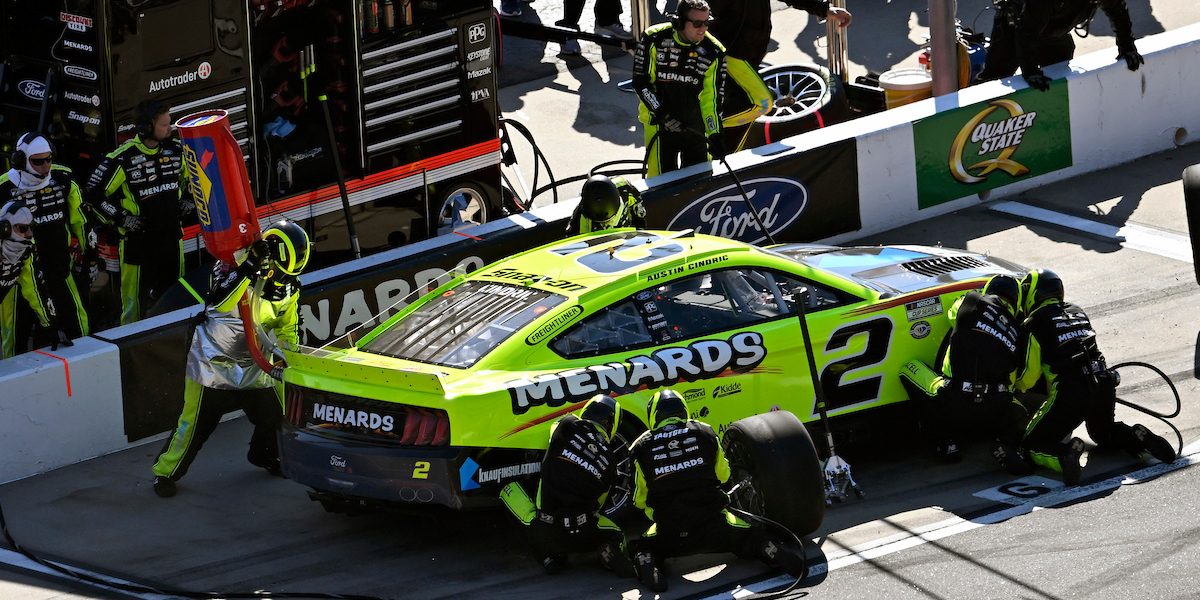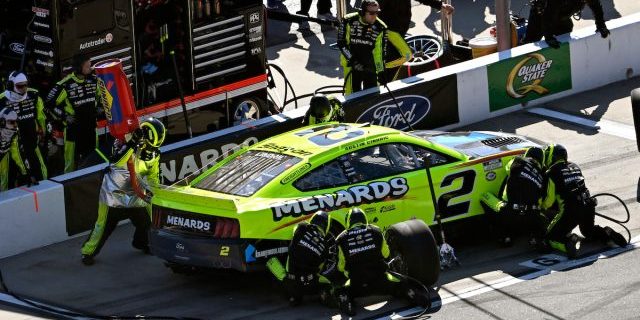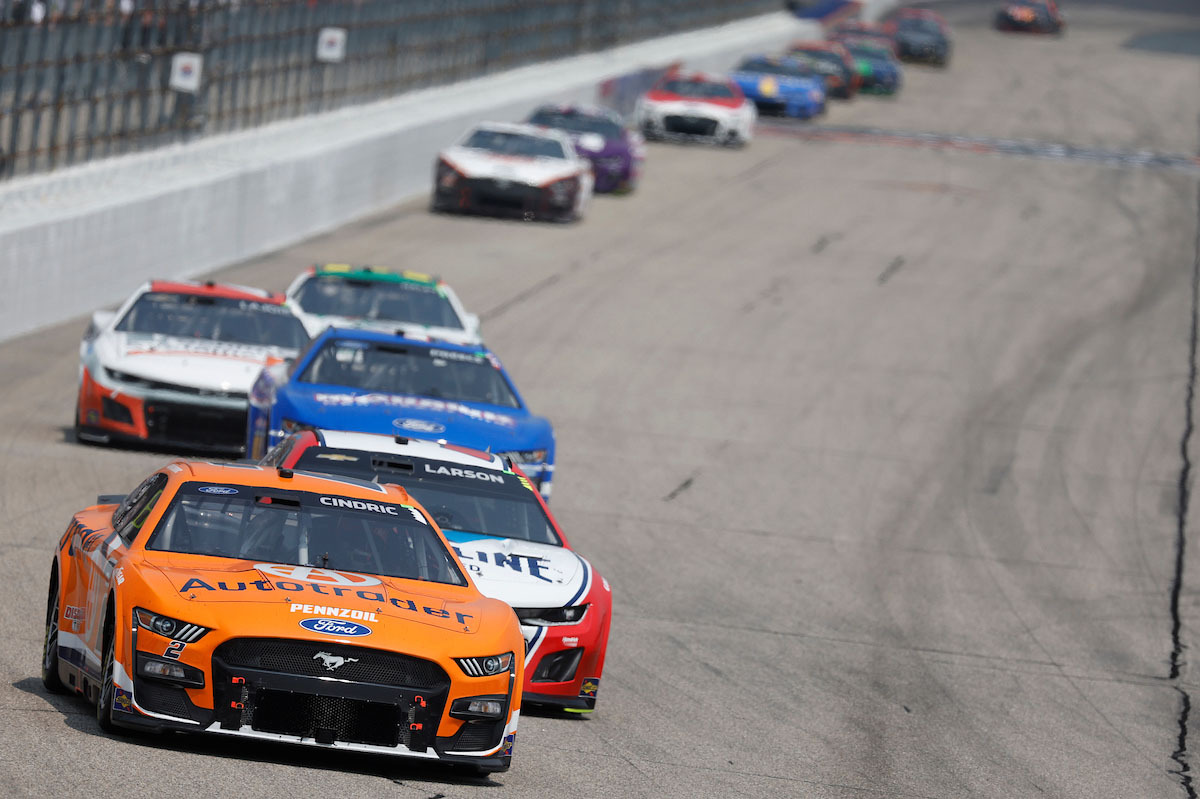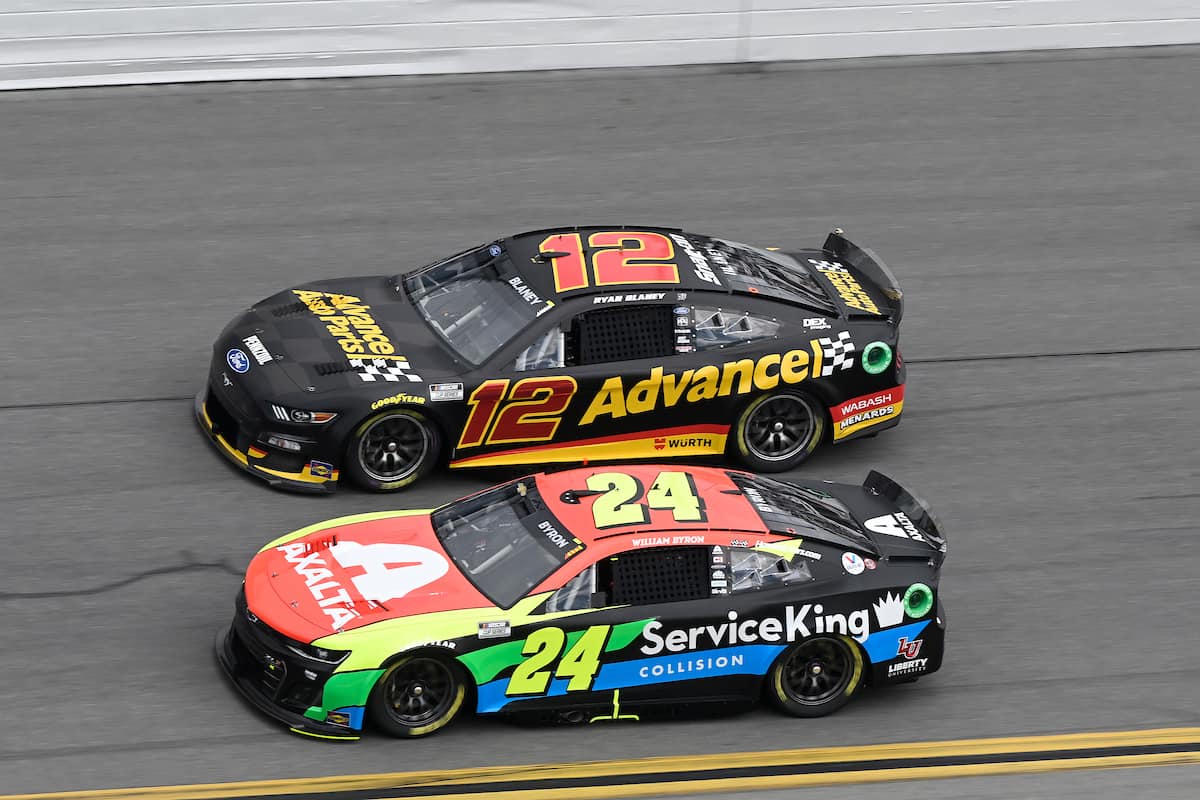How are NASCAR tires put on so fast?


From the moment the green flag drops at the start of a NASCAR race, everything becomes a test of speed, strategy, and precision – and this doesn’t just pertain to the drivers themselves. In the pits, crews perform an orchestrated dance of efficiency and quickness to change tires, refuel, and make crucial adjustments, all within seconds.
This article will examine how NASCAR pit crews are able to change tires so rapidly, ensuring their cars are back on the track vying for victory in no time at all.
Table of Contents
The Fast & Furious: How NASCAR Tires are Changed in a Jiffy
1. Tools of the Trade
Speedy tire changes wouldn’t be possible without specialized tools. A standout among these is the impact wrench, or ‘air gun’, which is used to unscrew and re-secure lug nuts at remarkable speeds. Next, there is the pneumatic jack which quickly lifts the car, and finally the new tire itself, waiting at the ready to replace the old one.
2. The Pit Crew: A Symphony of Speed
The pit crew is a well-oiled machine. Comprised of several members, each with distinct responsibilities, their coordination and synchronization are crucial.
The process begins with the jack man, who quickly jacks up one side of the car using the pneumatic jack. The rear tire changer then uses the air gun to unscrew the five lug nuts on the worn tire. Once loose, the tire carrier rolls the old tire away and positions the new one, while the tire changer secures it using the air gun once more. This whole process is repeated for the front tire. Remarkably, this orchestrated dance is often completed within 12 to 14 seconds.
3. Practice Makes Perfect
The fast pace of a NASCAR tire change is the result of countless hours of practice. Pit crews drill the process repeatedly to minimize any wasted movement and ensure they can perform under high-pressure situations. Teamwork, communication, and precision are just as important as speed. A slight delay or a single misplaced lug nut can lead to time penalties or even dangerous situations on the track.
4. Technological Innovation and Strategy
In recent years, NASCAR made a crucial change from five lug nuts to a single central lug nut design, similar to Formula 1. This has decreased the tire-changing time even further, making pit stops more crucial to race strategy. The development and usage of lighter and stronger materials for wheels and faster-acting tools have also contributed to the reduction in pit stop time.
5. Safety Measures
Safety is paramount in these rapid-fire operations. Despite the urgency, NASCAR has strict rules about pit stops, including the use of helmets, fire-retardant clothing, and safety glasses. Additionally, all five lug nuts must be securely fastened when changing tires. Any violation of these rules can lead to penalties, emphasizing the need for accuracy and precision alongside speed.
Pit Crew Mechanics
To understand the fast tire-changing process in NASCAR, you need to know the mechanics behind the pit crew. The pit crew comprises of a specific number of crew members, each with a predefined role. The crew practices and strategizes together to perform maintenance tasks in mere seconds.
Number of crew members
Pit crew mechanics need a certain number of team members to work with excellence. This number changes based on the type of race and its regulations.
Here is a table showing the number of crew members for different races:
| Race Type | Number of Crew Members |
|---|---|
| Formula One | 20 |
| Nascar Cup Series | 5 |
| IndyCar Series | 8 |
Every crew member has a unique role in the pit stop, such as tire changers, fuelers, mechanics, and more. Success depends on how well they can collaborate.
Bear in mind that rules for the pit crew vary based on the governing body or racing series. Nascar Cup Series only needs five crew members, but they have strict laws about equipment and actions during pit stops.
Role of each crew member
Pit Crew Mechanics are vital for successfully running a racecar during pit stops. Every crew member has an exact job, to make sure the car is back on track quickly.
- Front Tire Carrier: Carries and puts out new front tires.
- Front Tire Changer: Takes off and fits new front tires.
- Jackman: Lifts and lowers the car during tire changes.
- Gas Man: Refuels the car with fuel.
- Rear Tire Carrier: Carries and puts out new rear tires.
- Rear Tire Changer: Takes off and fits new rear tires.
- Support Crew Member: Assists other crew members.
Communication is important during the pit stop, to avoid mistakes and delays. The pit stop is quick, so accuracy is key. A mistake could mean losing valuable seconds or losing a race.
Pit Crew Mechanics are crucial for racing success – not just their work, but recognizing their importance and investing in proper training and equipment. The team should be engaged and work together to get the best results. Practice matters, but strategy is the key to winning – that’s why pit crew mechanics are so important.
Practice and strategy
Precision and strategy are musts to succeed as a pit crew mechanic. Working as a team to get the job done quickly is key. Each member has their own role, from tire changes to refueling. Minimize human error and maximize speed!
Strategy changes for every race, so fuel management and tire changes require different techniques. Unexpected circumstances, such as weather or accidents, need quick decision-making and thinking. This complex field requires agility and acuity – each second counts.
Tools Used in NASCAR Tire Change
To understand the tools used in NASCAR tire change with air guns and compressors, impact sockets and extensions, and torque wrenches and allen wrenches as solution.
Air guns and compressors
Check out this table about air guns and compressors used by NASCAR teams!
| Air Gun Type | Air Pressure (psi) | Compressor Size |
|---|---|---|
| Impact wrenches | 90-120 | 10-20 gallons |
| Stubby impact wrenches | 90-120 | 6-10 gallons |
NASCAR requires teams to use regulated and monitored pneumatic equipment for safety.
Fun fact: It only takes 15 seconds for a pit crew to change all four tires during a NASCAR race! Source: NASCAR.com
Impact sockets and extensions
High impact sockets and extensions are a must-have in the world of NASCAR tire changes. They have been designed to handle fast and furious pit stops.
NASCAR regulations demand each team to have at least four of these tools in varying sizes. Teams invest in high-grade materials like titanium for their sockets and extensions due to its strength, lightness, and flexibility.
During a pit stop that is 15 seconds or less, teams manage to replace 2-4 tires with precision. A NASCAR season has more than 30 races – indicating the need to have high-impact sockets and extensions for efficient tire changes.
| Size | Impact Level | Air Pressure Level |
|---|---|---|
| 1/2 inch | Medium | 90 PSI |
| 3/8 inch | Low | 70 PSI |
| 1/4 inch | High | 100 PSI |
Torque wrenches and allen wrenches
In NASCAR, several tools are used for tire changes, such as torque and allen wrenches. These are essential for correct wheel alignment and tightening.
The two tools are important, but serve different purposes. Torque wrenches measure bolt tightness accurately, while allen wrenches turn screws with hexagonal sockets.
Importance of Speedy Tire Change
To understand the importance of speedy tire change in NASCAR races, let’s dive into the crucial role it plays in determining race results. Safety concerns and time-saving benefits also go hand in hand with quick tire changes. Join us as we explore each of these critical sub-sections for a better understanding of the impact of a fast tire change in NASCAR.
Impact on race results
When it comes to the effect of a speedy tire change on race results, it cannot be overstated. The time taken for a pit stop and tire change has a massive influence on the driver’s final position.
| Impact of Speedy Tire Change | |
|---|---|
| Position Change | |
| Faster tire changes can lead to an improved place on the track, even podium finishes. That gives drivers a chance to overtake their rivals or keep leads from before the stop. | |
| Lap Times | |
| Changing tires quickly is essential to keeping lap times competitive with other racers. The longer it takes for a tire change, the more time is lost, making it hard to catch up. | |
| Safety Concerns | |
| A long pit-stop could result in safety issues for drivers leaving pit-lane due to increased traffic. Also, worn tires slow down speed and handling, increasing risks of accidents. |
Tire selection is key for maximizing speed under changing weather conditions. So, it’s important to not only change tires quickly but also spot possible changes in the forecast.
Winning any race needs excellent mechanics who are dependable during pit stops and know how to swap tires rapidly. With this in mind, every racing team must learn how to reduce their time during pit stops.
How are NASCAR tires put on so fast? – Frequently Asked Questions
Q: How do NASCAR pit crews change tires so quickly?
A: NASCAR pit crews practice tire changes tirelessly to develop muscle memory and teamwork. They use high-powered air guns, impact sockets, and specialized jacks to speed up the process.
Q: How quickly can a NASCAR pit crew change a tire?
A: NASCAR pit crews can change all four tires on a car in under 10 seconds, with individual tire changes taking around 2-3 seconds.
Q: How do NASCAR pit crews ensure the tires are secure?
A: NASCAR pit crews use a five-lug nut system to secure the tire onto the wheel hub. The crew members then use air guns to secure each of the five lugs into place, ensuring the tire is firmly attached.
Q: How often are NASCAR tires changed during a race?
A: NASCAR teams change tires during pit stops, which typically occur every 30-50 laps depending on the track. This means that tires are changed multiple times during a race.
Q: What happens to the old tires after they are changed?
A: The used tires are typically sent back to the tire manufacturer, who will examine them for wear and tear. Some teams may also resell used tires to other racing series or fans looking for souvenirs.
Q: What type of tires do NASCAR cars use?
A: NASCAR cars use specialized tires that are designed specifically for high-speed oval racing. They are typically made of a softer rubber compound that provides maximum grip on the track but wears out quickly.










